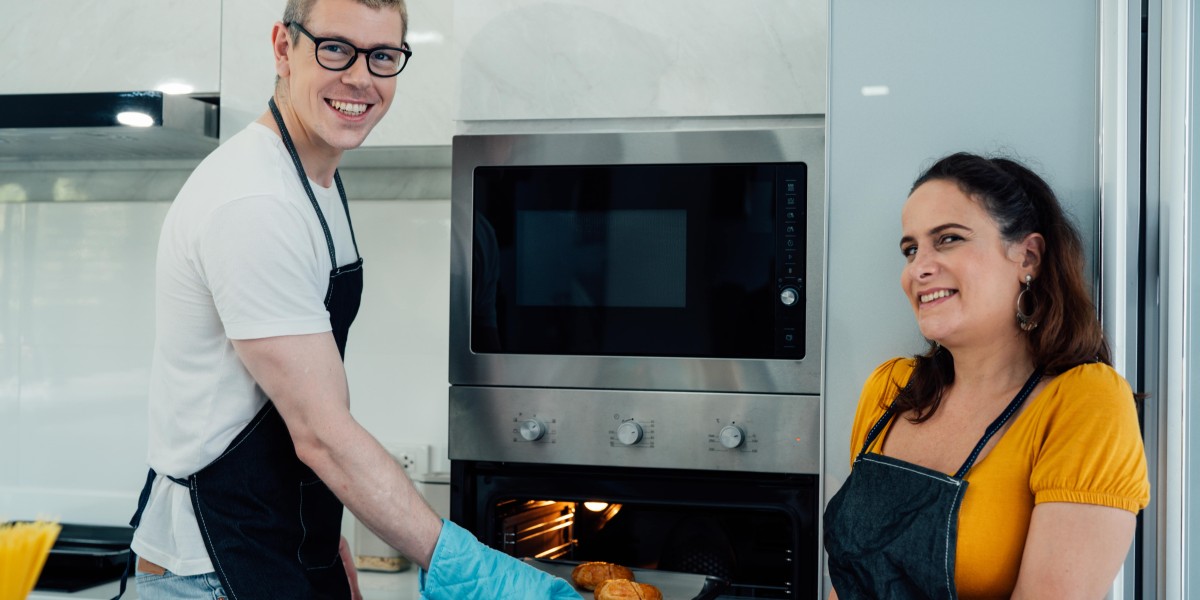
Fitted Ovens and Hobs: An In-Depth Guide to Modern Cooking Appliances
Fitted ovens and hobs have ended up being a staple in contemporary kitchen areas, integrating performance, visual appeals, and innovative innovation. These kitchen appliances are created to effortlessly incorporate into kitchen surface areas, offering the cooking enthusiast with the tools needed for efficient meal preparation while keeping a smooth and orderly look. In this article, we will explore the different types of fitted ovens and hobs, their benefits, factors to consider when choosing them, and answers to often asked concerns.
Understanding Fitted Ovens and Hobs
Fitted ovens and hobs are appliances particularly developed to be built into kitchen cabinets or counter tops for a smooth look. They can differ significantly in design, size, performance, and features, which accommodate diverse cooking needs and kitchen styles.
Types of Fitted Ovens
- Built-in Ovens: These ovens are set up straight into a wall or kitchen system and be available in various configurations and sizes.
- Double Ovens: A built-in variation that includes two separate oven compartments, allowing for multiple meals to be cooked at varying temperature levels at the same time.
- Combination Ovens: These flexible appliances combine traditional baking with microwave innovation.
- Steam Ovens: Ovens that use steam for cooking, maintaining moisture in food while improving tastes and nutrients.
- Single Ovens: A standard oven unit that is the most typical type used in homes.
Kinds of Hobs
- Gas Hobs: These use burner for cooking, offering immediate heat and precise temperature level control.
- Electric Hobs: Powered by electricity, these hobs frequently feature smooth surfaces that make them easy to clean.
- Induction Hobs: Utilizing electromagnetic energy, induction hobs heat cookware directly rather than the hob surface, making them energy efficient and a safe choice.
- Mixed Hobs: These use both gas and electric choices, providing versatility for cooking styles.
Advantages of Fitted Ovens and Hobs
Fitted ovens and hobs use various benefits that boost the cooking experience:
- Space Efficiency: Designed to fit into cabinetry, fitted appliances take up less space compared to standalone designs, developing a structured kitchen design.
- Looks: Fitted models typically produce a more cohesive and aesthetically attractive kitchen style.
- Customization: Homeowners can pick from a range of designs, finishes, and features to match their kitchen decor and cooking requirements.
- Improved Functionality: Many modern fitted ovens and hobs boast sophisticated technology, such as smart controls, self-cleaning features, and exact temperature settings, which streamline cooking.
- Security Features: Many hobs, especially induction designs, have safety functions such as car shut-off and child locks, promoting a much safer cooking environment.
Aspects to Consider When Choosing Fitted Ovens and Hobs
When picking fitted appliances for a kitchen, numerous elements ought to be thought about to ensure the best option:
- Cooking Style: Different appliances cater to various cooking practices. Home cooks must assess their common meal preparation approaches to find suitable appliances.
- Area and Layout: Measure the offered space in the kitchen to make sure that the picked appliances fit neatly without preventing motion.
- Energy Efficiency: Choose appliances with energy-efficient rankings to reduce energy costs and environmental impact.
- Innovation and Features: Consider the preferred features, such as wise technology, self-cleaning modes, or specific cooking functions like steam or convection cooking.
- Budget: Determine a budget plan before making selections to make sure that the selected designs align with monetary preparation.
Table: Comparison of Different Types of Ovens and Hobs
| Appliance Type | Pros | Cons |
|---|---|---|
| Built-in Ovens | Space-saving, personalized style | Setup expense can be high |
| Double Ovens | Cook multiple meals at various temps | Takes up more area |
| Steam Ovens | Healthy cooking, maintains nutrients | Typically greater expense |
| Gas Hobs | Quick heat control, preferred by chefs | Requires a gas line installation |
| Induction Hobs | Quick cooking, energy-efficient, safe | Needs suitable pots and pans |
| Electric Hobs | Easy to clean up, steady cooking temperature levels | Heating times can be slower |
Often Asked Questions (FAQs)
1. What is the difference in between a built-in oven and a freestanding oven?
A built-in oven is integrated into kitchen cabinets for a seamless look, while a freestanding oven stands alone and is often more visible and available.
2. Are induction hobs safe to use?
Yes, induction hobs are considered safe as they only produce heat when compatible pots and pans is put on them, lowering the risk of burns.
3. Can I set up a fitted oven myself?
While some individuals might choose to set up fitted ovens themselves, it is usually recommended to work with a professional to guarantee proper setup and adherence to security requirements.
4. What size of oven is perfect for a small kitchen?
In small kitchen areas, consider compact or single built-in ovens that fit within the offered area without compromising on cooking performance.
5. Do fitted ovens and hobs require unique upkeep?
Fitted appliances need basic maintenance, such as cleansing and regular checks. Nevertheless, specific maintenance tasks depend on the kind of oven or hob.
In conclusion, fitted ovens and hobs represent the epitome of modern kitchen style and functionality. By comprehending their types, benefits, and factors to consider, consumers can make educated choices that improve their cooking experiences while fitting perfectly into their home. Whether developing premium meals or preparing family suppers, fitted ovens and hobs are important tools in any cooking area.







